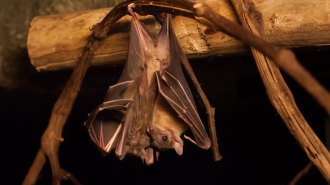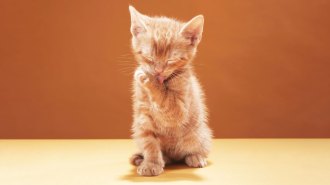Search Results
Taking notes and creating visual summaries
This activity asks students to practice two literacy skills: note-taking and summarizing. Note-taking helps students identify and remember important information, enhancing comprehension as they read. Creating a visual summary encourages students to consolidate and communicate key information.
Ecological relationship status
Students will use their knowledge of interspecific interactions to explore bacterial communities on human tongue cells. Then, students will apply those concepts to create metaphors for relationships in their own community.

Why Bat Viruses Are So Dangerous
This guide will help students understand how viruses in other animals can infect people, sometimes leading to epidemics or pandemics. In a group activity, students will imagine they are health officials developing action plans to prevent or stop an epidemic.
Collaborating to stop an epidemic
Students will imagine that they are officers at the World Health Organization and will work in groups to develop action plans to prevent the spread of a new virus, such as coronavirus.
The truth about bats and viruses
Students will answer questions about the Science News article “Why bat viruses are so dangerous,” which explores how the animals’ immune defenses might lead to killer human pathogens.
The path from outbreak to pandemic
Students will explore the definitions of outbreak, epidemic and pandemic and research how an outbreak becomes an epidemic or pandemic.

Concussion Leaves Clues in the Blood
This guide asks students to explore research into concussions and draw on their own experiences to think about the various signs and symptoms of injury or disease. After testing various materials, students will develop designs for protective headgear.
The difficult path to diagnosis
Doctors often have to diagnose an injury or disease based on incomplete information. In this discussion, students will explore how symptoms and other biological information — including protein biomarkers in particular — can help doctors identify a problem and recommend a treatment.
Searching for concussion clues
Students will answer questions about the Science News article “Concussion leaves clues in the blood,” which examines the search for a better way to diagnose concussions.
Cats and Punnett squares
Scientists would like to breed cats that don’t trigger allergies in people. By constructing and analyzing a Punnett square for two low-allergen cats, students will review key concepts including patterns and probabilities of inheritance, genotype, phenotype, genes, alleles, chromosomes and mutations.

How to Lick Cat Allergies
This guide asks students to explore how scientists are combating cat allergies, apply problem-solving strategies to an allergen of their choice, review basic concepts in genetics and analyze Punnett squares.
The quest to fend off cat allergies
Students will answer questions about the Science News article “How to lick cat allergies,” which explores some potential solutions to prevent and calm allergic reactions.